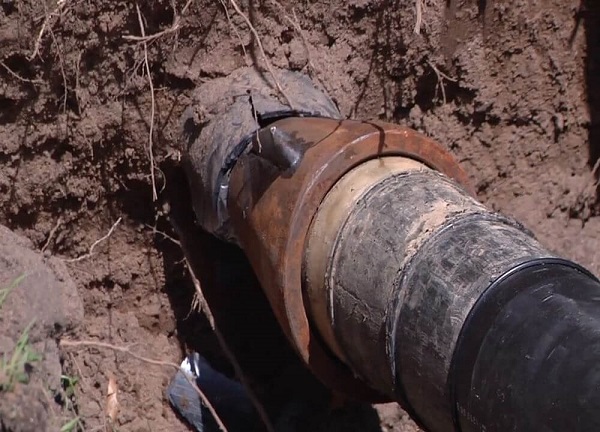The aging infrastructure of urban sewer systems poses significant challenges for municipalities around the world. Traditional sewer rehabilitation methods, often requiring extensive excavation, can be disruptive, costly, and time-consuming.
However, the advent of trenchless technology has transformed the way sewer systems are repaired and maintained.
This article delves into trenchless techniques, highlighting their advantages, methodologies, and the future of sewer rehabilitation.
Understanding Trenchless Technology
Trenchless technology refers to a set of construction methods used for installing, rehabilitating, or replacing underground utilities without the need for extensive excavation. This approach minimizes surface disruption, reduces the environmental impact, and often leads to faster project completion. Key trenchless techniques for sewer rehabilitation include:
- Pipe Bursting
- Cured-in-Place Pipe (CIPP) Lining
- Sliplining
- Spiral Wound Lining
Each method has its unique applications, benefits, and limitations.
1. Pipe Bursting
Overview: Pipe bursting is a trenchless replacement technique that involves breaking apart the existing pipe while simultaneously installing a new pipe of the same or larger diameter.
Process:
- A bursting head is inserted into the old pipe.
- The head fractures the old pipe as it is pulled through the existing pipe.
- A new pipe, typically made of HDPE (high-density polyethylene), is drawn into place.
Advantages:
- Increased Capacity: Allows for upsizing the pipe diameter.
- Minimal Surface Disruption: Reduces the need for extensive excavation.
- Durability: New pipes are often more resistant to corrosion and root intrusion.
Limitations:
- Not suitable for severely collapsed or heavily damaged pipes.
- Requires access points at both ends of the pipe being replaced.
2. Cured-in-Place Pipe (CIPP) Lining
Overview: CIPP is a method used to repair existing pipes by creating a new pipe within the old one using a resin-impregnated felt tube.
Process:
- The felt tube is inserted into the damaged pipe using either inversion or pulling methods.
- Once in place, the tube is inflated and cured using hot water, steam, or ultraviolet light, forming a new, solid pipe.
Advantages:
- Cost-Effective: Reduces the need for digging and the associated costs.
- Minimal Disruption: Can often be completed in a matter of hours.
- Improved Flow Characteristics: Creates a smooth inner surface that enhances flow.
Limitations:
- Limited to certain pipe diameters and conditions.
- Curing time can vary based on environmental conditions.
3. Sliplining
Overview: Sliplining involves inserting a smaller diameter pipe into an existing, larger pipe to restore functionality.
Process:
- The existing pipe is cleaned and inspected.
- A new pipe is pulled or pushed into the old pipe.
- Annular spaces between the new and old pipe can be grouted to prevent movement.
Advantages:
- Simple and Effective: A straightforward method for rehabilitation.
- Structural Support: Provides additional support to the existing pipe.
Limitations:
- Reduced flow capacity due to the smaller diameter.
- Not suitable for pipes with significant structural damage.
4. Spiral Wound Lining
Overview: Spiral wound lining is a technique that involves creating a new pipe from a flat strip of material wound into a spiral shape inside the existing pipe.
Process:
- A special machine inserts the flat strip into the existing pipe.
- The strip is wound in a spiral pattern, forming a new pipe as it is fed through.
Advantages:
- Flexibility: Can adapt to varying diameters and shapes of existing pipes.
- Reduced Installation Time: Can be installed quickly with minimal disruption.
Limitations:
- Requires precise measurements and planning.
- May not be suitable for heavily damaged pipes.
Benefits of Trenchless Techniques
- Reduced Disruption: Trenchless methods significantly minimize surface disturbance, preserving roads, landscaping, and existing utilities.
- Cost Savings: While initial costs can be comparable to traditional methods, the overall expense is often lower due to reduced labor, restoration, and traffic management costs.
- Environmental Considerations: Trenchless technology reduces the ecological impact by minimizing land disturbance and waste generation.
- Speed of Installation: Many trenchless methods can be completed in a fraction of the time required for traditional excavation methods, leading to faster project completion.
- Enhanced Longevity: New materials and methods used in trenchless rehabilitation often result in improved longevity and performance of sewer systems.
Challenges and Considerations
Despite the advantages, trenchless techniques are not without challenges. Factors such as soil conditions, the presence of other utilities, and the extent of existing damage can impact the suitability and effectiveness of trenchless methods. Additionally, municipalities must invest in training and technology to effectively implement these advanced techniques.
The Future of Sewer Rehabilitation
As urban areas continue to grow and infrastructure ages, the demand for efficient, sustainable rehabilitation solutions will only increase. The future of sewer rehabilitation lies in continued advancements in trenchless technologies, such as the development of smart sensors for real-time monitoring and diagnostics, improved materials for longer-lasting repairs, and integration with digital tools for enhanced planning and execution.
Conclusion
Trenchless technology represents a smart, efficient way to rehabilitate sewer systems while minimizing disruption and environmental impact. As cities around the world seek innovative solutions to aging infrastructure, trenchless techniques will play an increasingly vital role in maintaining and enhancing urban sewer networks.
By embracing these technologies, municipalities can ensure reliable, sustainable sewer systems for future generations.
Also Read
A deep dive into concrete curing compounds: Enhancing concrete durability
DIY Made Easy: Must-Have Paint Sprayers for Home Projects

